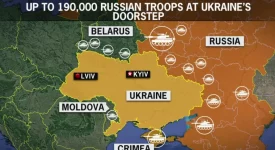Following a year of negotiations between the EU Commission and EU ministers, a cohesion policy for 2014-2020 has been approved. The Regional Development Committee enhanced the 325 billion EUR package, which was the last step before moving the deal for a vote in plenary, most likely in mid-November. The cohesion policy – about a third of the Union’s entire budget – is going to change substantially in 2014-2020 though still keeping its primary target to develop EU regions.
Danuta Hubner, the Polish chair of the Committee on Regional Development expressed her belief that the cohesion funds would deliver major investment during the ongoing economic crisis. The main recipients of the cohesion policy remain less developed regions of the European Union, which for example includes basically almost entire territories of Poland, Czech Republic, Slovakia, Hungary, Bulgaria, Romania, but also westernmost parts of Great Britain and southern Italy. Poland is by far the biggest recipient of the cohesion funds with 72.5 billion EU followed by Italy with 29.2 billion EUR.
Newly, however, local and regional partners are supposed to have more power in decision-making on how the funds are being allocated. The projects financed under cohesion policy will now also be less loosely connected to a particular topic, and greater flexibility will be allowed. Yet, the projects should somehow fall into the development framework ‘Europe 2020’ that promotes local growth as well as more and greener jobs. In addition, the EU prefers that the supported projects have an environmental dimension too. Moreover, the Commission seems to have reacted to Britain’s David Cameron reproaches regarding the amount of red tape in the EU by reducing some of the bureaucratic procedures with respect to cohesion funding. A new “common strategic framework” is to serve as the only guidance for all five development funds: European Regional Development Fund (ERDF), the European Social Fund (ESF), the Cohesion Fund (CF), the European Agricultural Fund for Rural Development (EAFRD), and the European Maritime and Fisheries Fund (EMFF).
According to new rules, a project can draw financing from more sources at the same time, which is hoped to maximize efficiency and address country- and region-specific issues. EU policy-makers wish that more and more projects will be implemented cross-border and intra-regionally. This is actually the first time when the cohesion agenda defines a comprehensive regulation for multi-country, multi-region, and se-basin goals. We could reasonably believe that the new cohesion funding rules will also strengthen the position of the European Social Fund since regions may start finishing their operational programs. In her opinion, this is an obvious signal that the EU wants to combine the cohesion agenda with social objectives.
Many of changes made to the new framework have been inspired by critical suggestions received prior to cohesion 2014-2020 talks. “Common strategic framework” has been developed to address the issue of funding instruments with different goals and procedures, while lack of commitment among EU member states to pursue cohesion targets is hoped to be increased by multi-party projects. Yet, the issue of fragmented management and lack of coordination has not been sufficiently addressed by the new proposal. The problem is closely tied to monitoring, which has proven to be problematic in previous years. In contrast to worldwide development projects in poor countries, which often suffer from the lack of surveillance and feedback on how the foreign aid was spent, EU development policy in its own territory seems to be fighting too much compliance. Because the cohesion scheme has too many indicators being monitored, it is hardly possible to ensure the coherence of ongoing projects with targets and indicators.
Moreover, indicators and outcomes are often not comparable with other programs and regions. Although particular member states are making some effort to tackle these issues, it seems that the Commission’s expectations differ from those on local level. Although the issue of monitoring might seem marginalized given the “real” problems like job creation and growth, proper post-project evaluation is important in the light of taxpayers’ attitude towards the importance of the cohesion policy itself. Whereas it might not be difficult for a Pole to appreciate the impact on the country, a German might not be so sure about how their money is being spent. And in the end, the main goal of the cohesion policy should be to increase the awareness about the necessity of development for all Union’s regions no matter who pays the biggest chunk.
Article Tags:
Bulgaria · CF · Czech Republic · Danuta Hubner · David Cameron · EAFRD · EMFF · ERDF · ESF · EU · Germany · Great Britain · Hungary · Italy · Poland · Romania · SlovakiaArticle Categories:
EUROPE'S NEIGHBORHOOD






